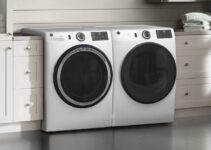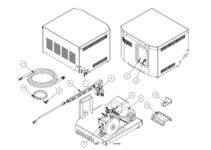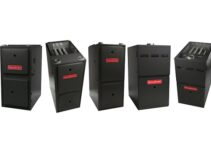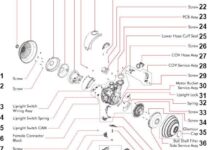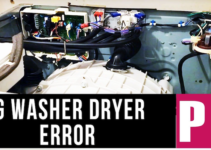If your Hotpoint washer stops spinning, there are many fixes to apply to solve the problem and get it working again. In most cases, the problem could be due to a defective component that would have to be entirely replaced.
Below, we’ve detailed the most common causes of Hotpoint Washer not spinning problems and what you should do to get it functioning properly
Hotpoint Washer Not Spinning: How to Fix
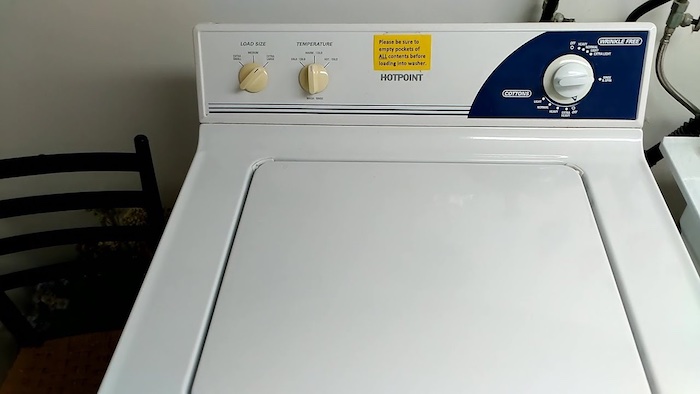
1. Lid Switch Assembly Failure
The function of the lid switch assembly is to prevent the washer from spinning when the lid is open. So, the Hotpoint washing machine won’t spin if the lid is not properly sealed. This means if the lid switch assembly is defective, the washer will not spin.
How to Fix:
To check the lid switch assembly for faults, you will have to use a multimeter to test the lid switch for continuity. If the lid switch does not have continuity, the next step would be to replace the defective part.
2. Defective Drive Motor
This is not a really common problem. The drive motor might be defective which could prevent the washer from spinning. However, this rarely happens.
Before, considering the drive motor as the culprit, check all of the more commonly faulty washer components. If you have confirmed that those components are not faulty, you would have to replace the drive motor.
How to Fix:
To find out if the problem is due to a faulty drive motor, first ensure that the motor is getting power. If you notice that the drive motor hums but doesn’t run, makes a lot of noise, or does not turn freely, it means that the drive motor is faulty and would have to be replaced.
3. Faulty Motor Coupling
The motor coupling is designed to connect the motor to the washer transmission. Problems can arise with the motor couple if the washer is overloaded.
More specifically, if the washer is overloaded, the motor coupling will fail in order to prevent both the motor and transmission from developing faults. However, the motor coupling can also fail due to normal wear as you use the machine.
How to Fix:
Inspect the motor coupling to determine if it has failed or is broken. If you notice any signs of damage, you would have to replace the motor coupling.
4. Faulty Door Latch Switch
The Hotpoint washer door latch secures the washer door shut while it is in use. When the washer door is closed, the washer can begin the cycle. If the washer door is not latched securely, the door switch will stop the washer from starting the cycle.
In the event that the door latch is defective, the washer will not spin or start. A defective door latch can be due to several reasons; either mechanical or electrical.
How to Fix:
Fixing the door latch should be easy but you might need a multimeter to make things easier. While the door latch switch is the most common culprit, you should check every part of the door latch before fixing anything. Inspect the door latch for any signs of fault.
If the door latch is defective, or unable to close properly, it would have to be replaced. This would be a mechanical fix. In the case of an electrical failure, you would have to look at the door latch switch. Use a multimeter to test any door latch switches for continuity. If there is no continuity on one of the switches when activated, then it would have to be replaced.
5. Defective Motor Control Board
The motor control board delivers power to the motor. A defective motor board will cause the washer not to function properly or stop functioning completely. This could be a massive fix that might require some professional help, but you can get things started on your own.
How to Fix:
Inspect the control board for faulty or burned-out components. This should make it easier to determine if the motor control board is defective. After that, check if the control board is providing power to the motor. If the control board does have power, but there is no power in the motor, then it could have to be replaced.
6. Faulty Transmission
The transmission features gears in them. These could fail to cause the washer not to spin or agitate. The washer transmission might also be worn out or defective.
However, both rarely happen, except if you’ve been using the washing machine for a long while. Before you perform any checks on the transmission, check all the other components we’ve talked about in this troubleshooting guide.
How to Fix:
You can inspect the transmission for damages. Check if the motor is turning the transmission. If this happens but the transmission does not spin or agitate, then it would have to be replaced.
7. Damaged Drive Pulley
The drive pulley of the washing machine is connected to the washer drum. It works with the drive belt and motor to get the washer spinning. If the drive pulley gets worn out, this could cause the drive belt to slip off. In such an event, the washer would be unable to spin.
How to Fix:
To check if the drive pulley needs to be replaced, remove it and inspect for any signs of damage or faults. You should be able to notice any damage right away. If you do, then the drive pulley would have to be replaced.
8. Faulty Rear Drum
The rear drum of the washing machine features a bearing or multiple bearings designed to keep the inner tub spinning smoothly. You will hear a noise when the rear drum fails and your machine should stop spinning.
How to Fix:
In most cases, you would only need to replace the bearing of the rear drum. This should be an easy fix. However, you might have to replace the outer drum as well. The best solution would be to replace everything as your model might come with both parts to save you the trouble of having to replace the new bearing if it fails.
